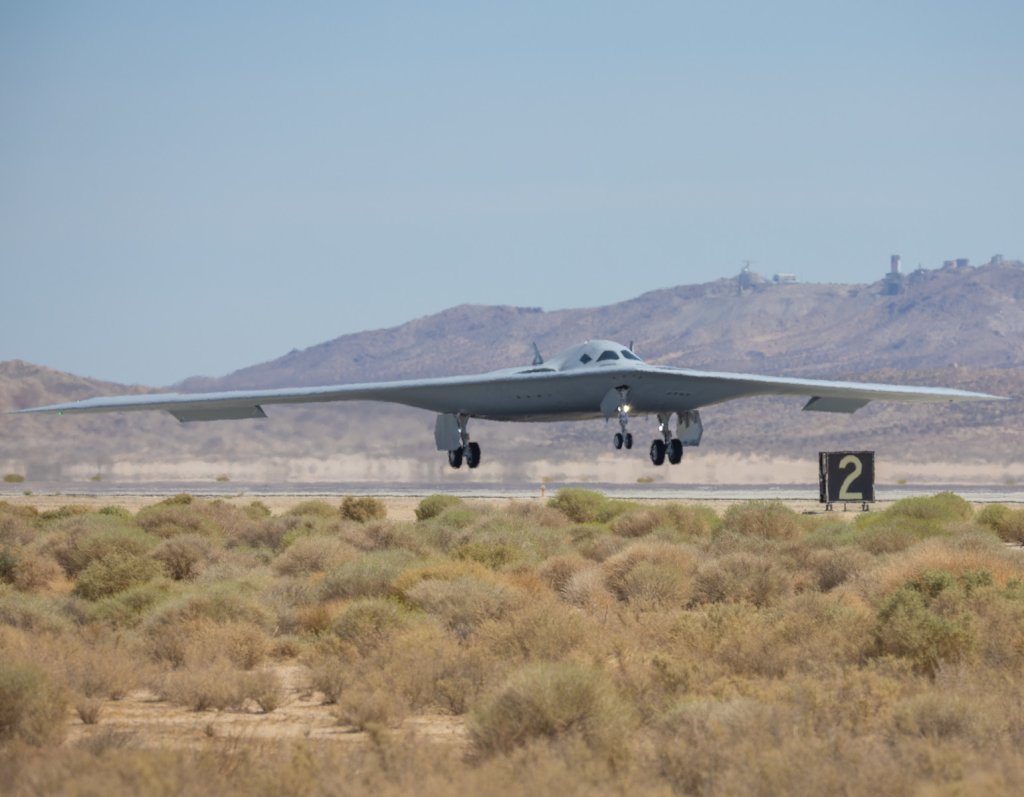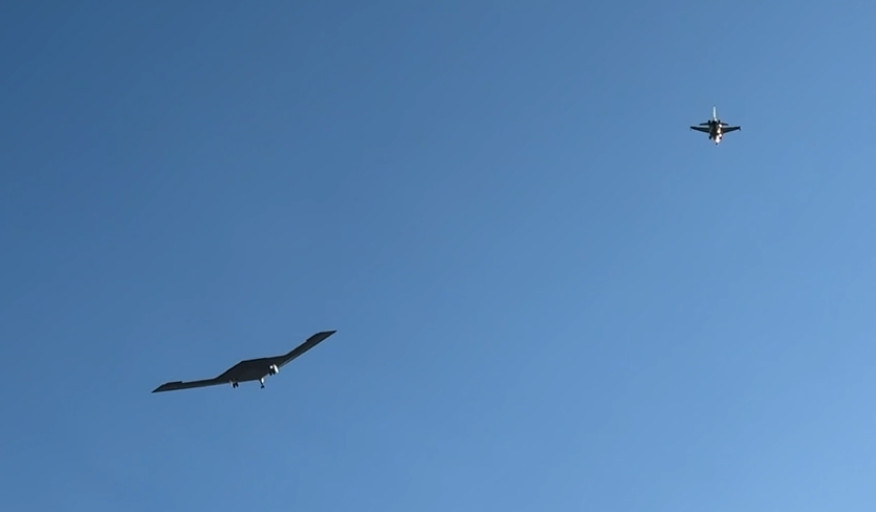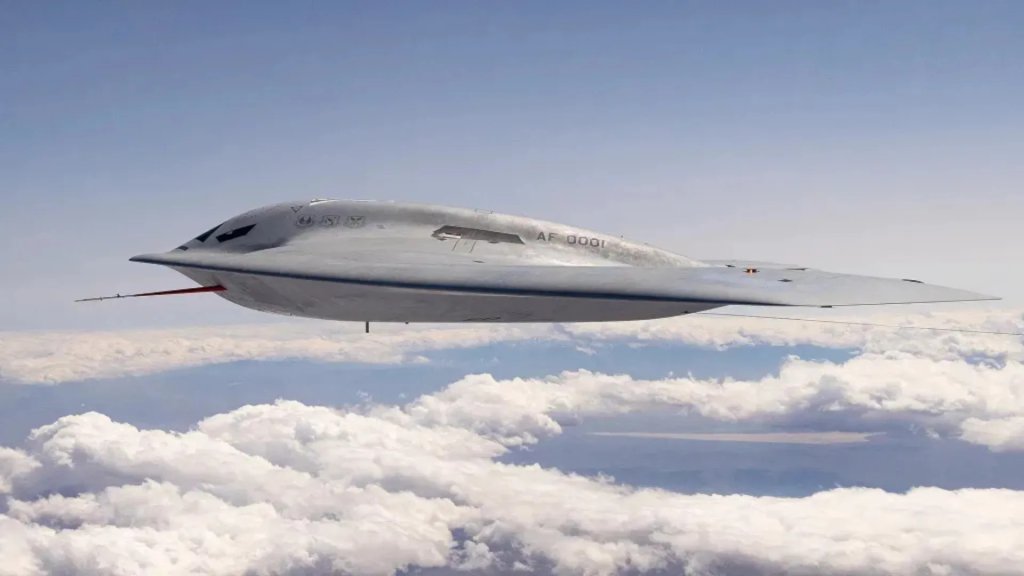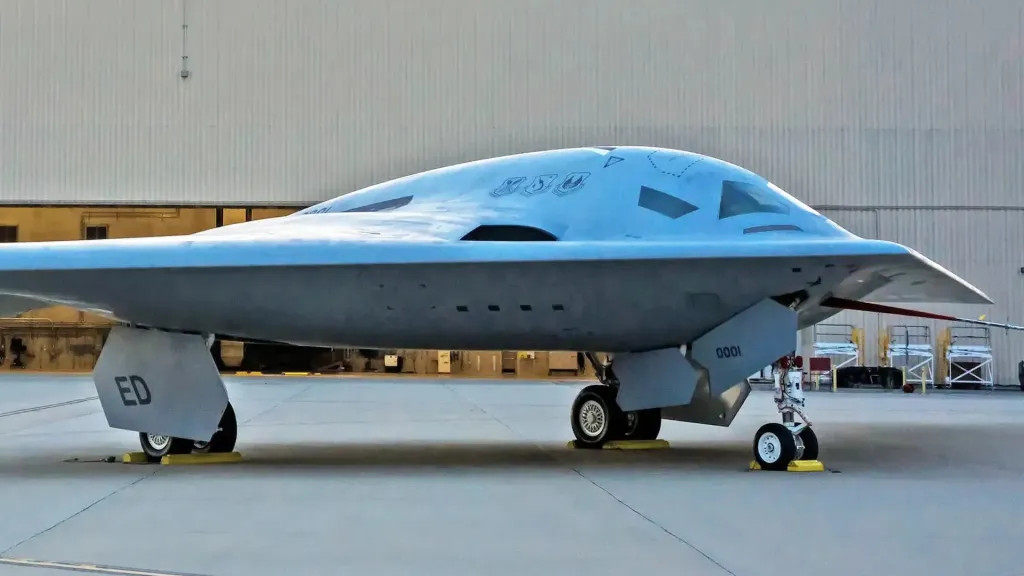Two B-21 Raider Stealth Bombers Photographed Together For The First Time
We now have our first look at the U.S. Air Force’s two flying B-21 Raider stealth bombers together at Edwards Air Force Base. The second pre-production B-21 arrived at Edwards yesterday after making its maiden flight from the Air Force’s Plant 42, which TWZ was first to report.
Both of the pre-production B-21s delivered to date are now assigned to the 420th Flight Test Squadron at Edwards, which forms the core element of the B-21 Combined Test Force. Edwards has long been a central hub for Air Force test and evaluation efforts, but saw significant expansion of its facilities starting in the late 2010s, in large part to prepare for the Raider’s arrival.

At least two non-flying Raider airframes are also being used to help with ongoing testing. Four more pre-production Raiders are in various stages of construction at Northrop Grumman’s facility at Plant 42. As of January, Northrop Grumman had received two contracts for low-rate initial production of additional B-21s, as well.
Unlike the first pre-production B-21, which took to the skies for the first time back in November 2023, the second example is still largely devoid of uniquely identifying markings, like serial number, two-letter base code, and unit crests. We can now see that there is a motif on the inside of the nose landing gear bay door featuring an ancient Greek-style helmet with wings spread behind, as well as what looks to be crossed spears below. We have reached out to the Air Force and Northrop Grumman for more information about these symbols and their significance.

The first B-21 has the nickname Cerberus and a silhouette of that three-headed dog from ancient Greek (and later Roman) mythology is painted on the outside of its nose landing gear door. The aircraft also has a bird silhouette painted underneath the nose, an homage to past Northrop corporate logos.

The picture of the two B-21s together at Edwards, as well as other new Raider imagery the Air Force has released in the past day or so, also further underscores the aircraft’s unusual cockpit window arrangement. TWZ has explored the design of the cockpit windows, including the visibility limitations they impose, in detail in the past.

We also now have our first look at the second pre-production B-21 in flight, which offers a new view of the bomber’s conformal inlets. The bomber’s inlets are one of the most exotic known features of the design, as you can read more about here. In general, low observable inlets are among the most critical aspects of a stealthy aircraft, and it has been publicly disclosed that the ones found on the Raider presented significant challenges during development.

The first flight of the second B-21 had already afforded the best look to date of the Raider’s broad underbelly, including its weapons bay configuration. As TWZ wrote yesterday:
“The high-resolution image of the underside of the second B-21 is particularly notable in that it shows a single main bay. The other two sets of outboard door apertures are seen sealed shut with fasteners lining their perimeters. They also appear to be at least configured for radiofrequency (RF) sensor apertures. Together, this all points to the Raider only having a single large central weapons bay, not a pair of smaller additional ones on the side, a possibility that had been raised in the past. You can read about speculation regarding these bays here. Regardless, this could possibly change in the future, but, at this time, these appear to be access doors to the engines and other systems, not auxiliary weapons bays.”

In a press release yesterday, the Air Force touted the testing benefits that will come from now having two B-21s at Edwards.
“The addition of the second aircraft expands the Air Force’s testing capabilities beyond initial flight performance checks, enabling progression into critical mission systems and weapon integration testing phases. This advancement marks a significant step toward operational readiness of the nation’s sixth-generation stealth bomber,” according to the release. “The presence of multiple test aircraft at Edwards AFB also provides Air Force maintainers invaluable hands-on experience in managing simultaneous aircraft sustainment operations, testing the effectiveness of maintenance tools, technical data and the logistical processes that will support future operational squadrons.”
A separate press release from Northrop Grumman also highlighted plans to demonstrate an “enhanced software package” that will allow it to “deliver seamless upgrades to the B-21 fleet, ensuring its mission capability and weapons evolve to outpace any threat.” Beyond opening up a more streamlined path to integrating new and improved functionality down the line, the Raider’s heavy use of open-architecture, software-defined mission systems has already been a boon to the aircraft’s initial development.
“We are capitalizing on the revolution in digital [processes] – models-based systems engineering, open mission systems architecture software,” Air Force Maj. Gen. Jason Armagost, then Director of Strategic Plans, Programs, and Requirements at Air Force Global Strike Command (AFGSC), offered as an example back in 2022. “As an example, the software for the fuel control system, which is a pretty complex thing, is completely done on an aircraft that hasn’t even flown yet as a test article, because of how we’re able to do models-based systems engineering. And they actually built a fuel systems model and tested the software, and the software is ready to go.”
Armagost is now commander of the Eighth Air Force, which oversees all of the Air Force’s operational bomber fleets.
The Air Force’s current stated goal is to begin fielding the B-21 operationally before the end of the decade. The service plans to buy at least 100 of the bombers, though there are growing signs that the final fleet size could be larger, as you can read more about here.
“Concurrent with the expanded flight-testing effort, fiscal year 2026 will see the launch of extensive military construction projects at all three designated B-21 main operating bases,” the Air Force noted in its press release yesterday. “Ellsworth AFB, S.D., the first base set to receive operational B-21 aircraft, is already progressing rapidly on numerous infrastructure projects to ensure readiness when the aircraft arrive.”
With the help now of a second B-21, the test force at Edwards will continue to expand its work helping to pave the way toward future Raider operations.
Contact the author: [email protected]











